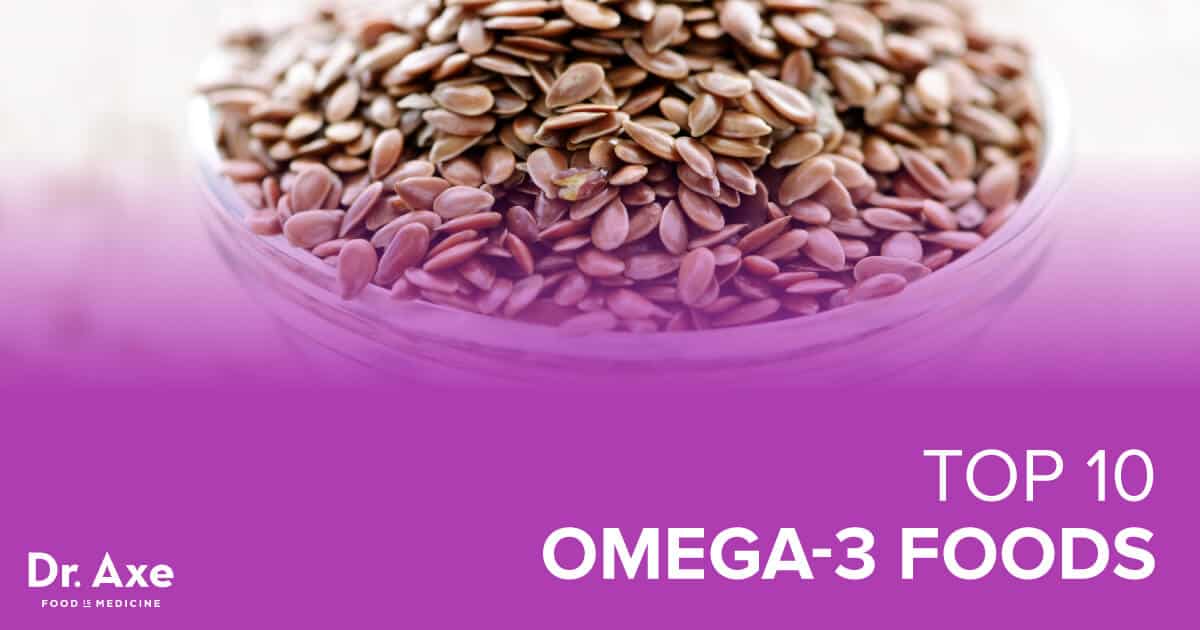By Dr. Josh Axe, DC, DMN, CNS
October 24, 2019
Omega-3 (or omega three) fatty acids get a fair amount of time in the press and a great deal of respect at this point, but do you know what omega-3s are? What omega-3 benefits could convince you to add more oily fish (or maybe a supplement) to your diet? Could you be deficient in these fatty acids?
We’ll unpack these questions one by one, but let’s start by saying that omega-3 fatty acids are crucial nutrients for overall health. Your body doesn’t produce omega-3s on its own, which means they are “essential fatty acids” — you have to consume them.
When it comes to omega-3 benefits, there are rarely nutrients that pack this many positive health outcomes into one compound. The most commonly known benefit of omega-3s is a reduced risk of heart disease, but that’s not the only studied plus of getting lots of omega-3s in your diet.
In fact, omega-3 benefits everything from from fetal development to retinal function, weight management and a lot more in between. These acids support and promote optimal health for anyone.
In fact, the FDA has already approved two omega-3 formulations as approved treatments for high triglycerides. One contains just one compound, and the other contains two of the animal-based omega-3 fatty acids, EPA and DHA.
What Are Omega-3s?
Omega-3s are a specific type of polyunsaturated fatty acid. That means they contain more than one double bond in their chemical structure. The “3” refers to where in the chemical structure the first double bond occurs.
Your body is able to synthesize saturated fatty acids, but you don’t have an enzyme that allows you to stick a double bond in the right spot to create omega-3s yourself.
The four most common omega-3s found in food are ALA, EPA, ETA and DHA.
Alpha-linolenic Acid (ALA): This plant-based omega-3 is found in green, leafy vegetables; flaxseeds and chia seeds; and canola, walnut and soybean oils (although those rancid oils are not ones I generally recommend). ALA is known as a short-chain omega-3. This means your body has to convert it into longer-chained EPA and DHA to synthesize it. This process is rather inefficient, and only about one percent of the ALA you consume is converted to the long-chain version your body needs (although this percentage is slightly higher for women).
Eicosapentaenoic Acid (EPA): EPA is a 20-carbon fatty acid found in oily fish, algae oil and krill oil. Your body is able to synthesize this molecule in its original form. EPA and DHA are the omega-3s your body needs in high quantities to achieve the benefits they offer.
Eicosatetraenoic Acid (ETA): ETA is a lesser-known omega-3 fatty acid that also contains 20 carbons, like EPA, but only four bonds instead of five. It is found richly in roe oil and green-lipped mussel. It has only recently been recognized for its potent health benefits. Not only is it anti-inflammatory, like the other omega-3s, but ETA can also limit your body’s production of the inflammatory omega-6 fatty acid arachidonic acid (ARA). In fact, ETA redirects the enzyme that normally creates ARA to convert it to EPA instead.
Docosahexaenoic Acid (DHA): This 22-carbon molecule is also found in oily fish, krill oil and algae oil. Your body converts some DHA molecules back to EPA in order to keep them at fairly equal levels if you consume more DHA.
Your body also needs omega-6s, another type of fatty acid, to function properly and prevent disease. Omega-6s come in some form of linoleic acid. They are found in vegetable oils, safflower oils, meat, poultry and eggs.
Unfortunately, these are found in much more abundance than omega-3s in the standard American diet, although your body craves a 1:1 ratio to keep inflammation low. Most modern diets contain a ratio closer to 20:1 or 30:1 omega-6 to omega-3 fatty acids.










